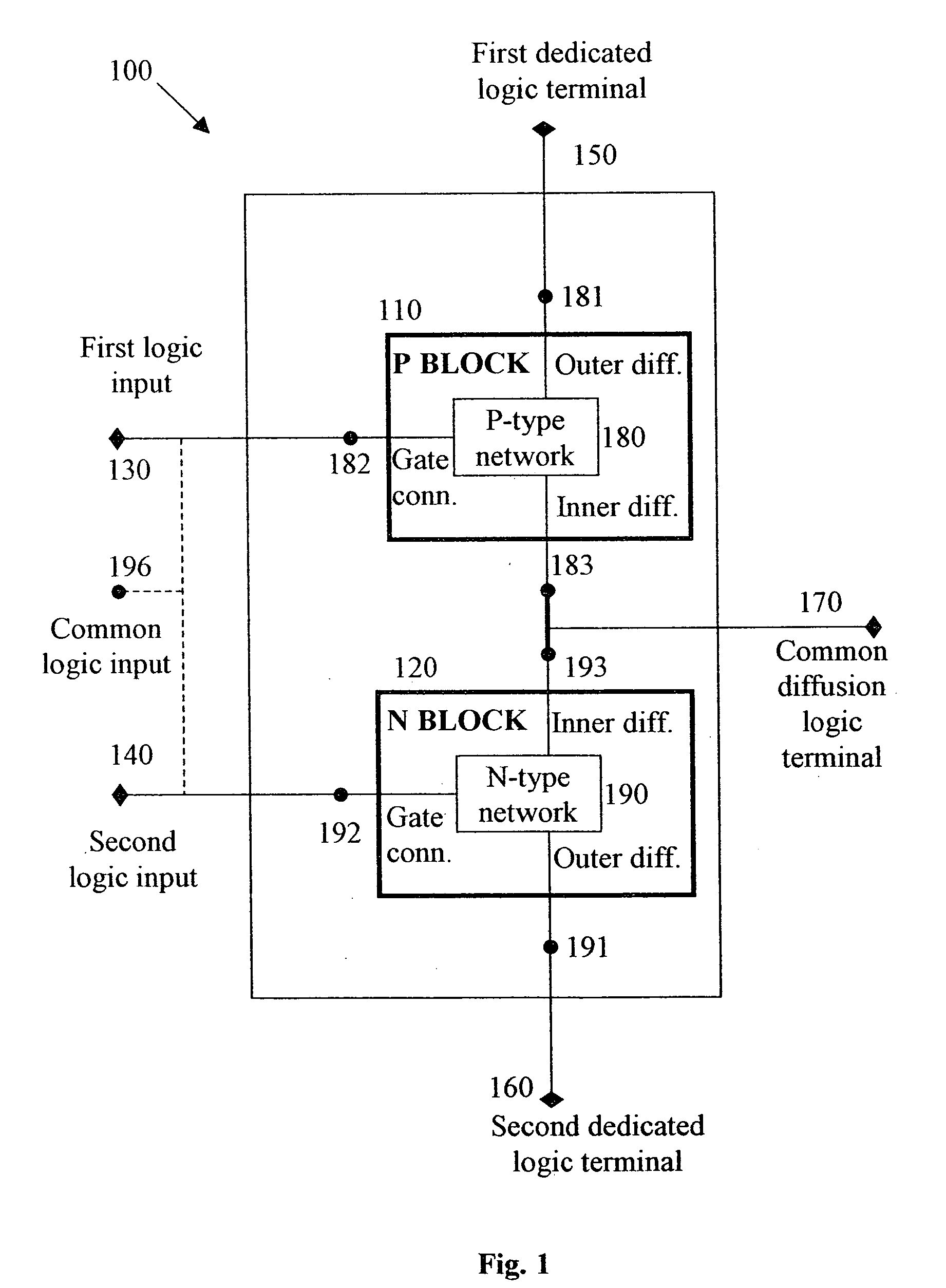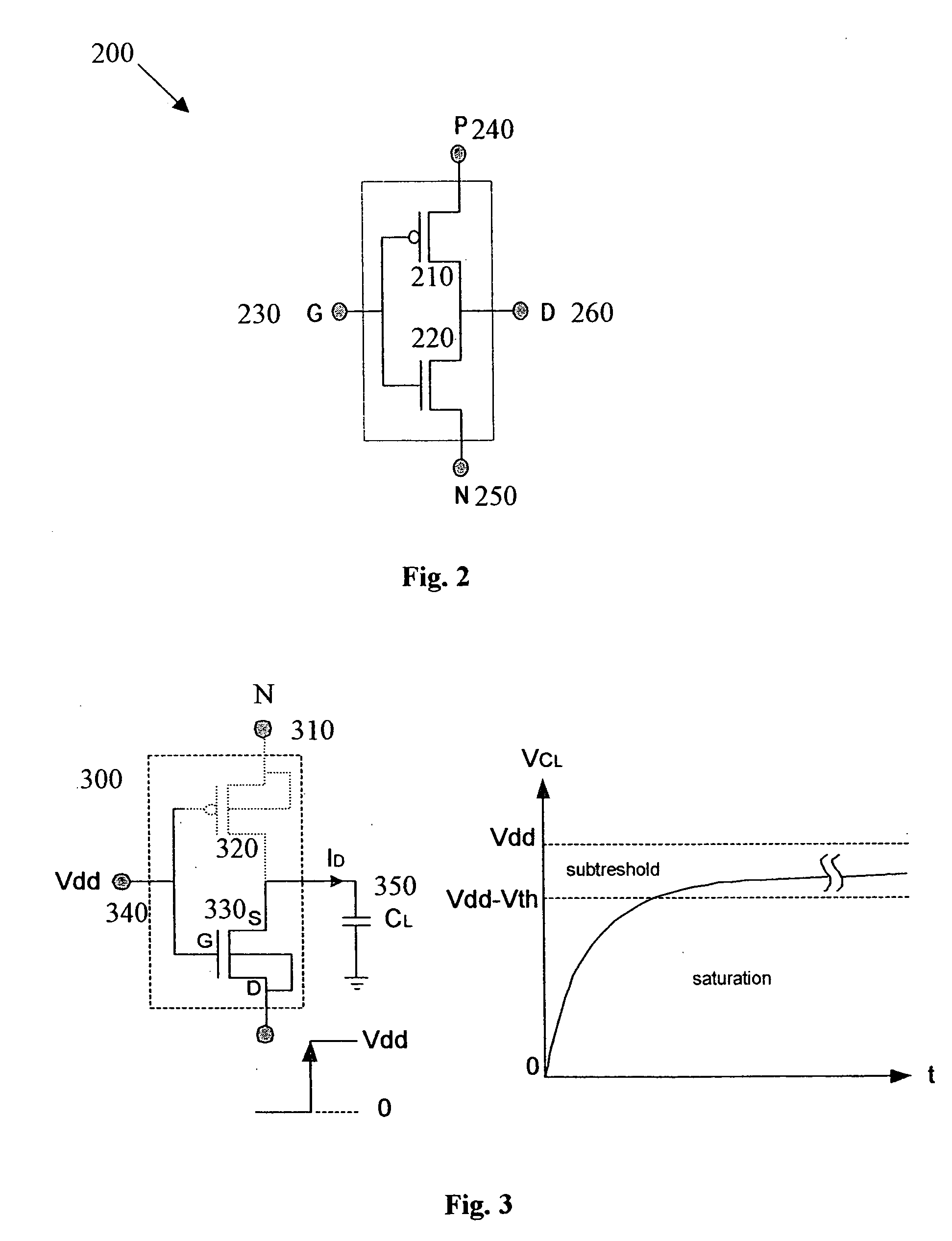Logic circuit and method of logic circuit design
a logic circuit and logic circuit technology, applied in the field of logic circuits and logic circuits, can solve the problems of slow operation at reduced supply voltage, reduced current drive, and reduced supply voltage in most ptl implementations
- Summary
- Abstract
- Description
- Claims
- Application Information
AI Technical Summary
Problems solved by technology
Method used
Image
Examples
Embodiment Construction
[0244] Reference is now made to the following examples, which together with the above descriptions illustrate the invention in a non-limiting fashion.
[0245] Simulations were performed to determine the relative performance of five GDI logic gates to other logic gate technologies. Five sets of comparisons were carried out on various logic gates, MUX, OR, AND, F1, and F2. Reference is now made to FIGS. 18a, 18b, and 18c, which show GDI XOR, AND, and OR gates respectively, and their equivalents in CMOS, TG, and NMOS Pass-Gate (N-PG) technologies. The cells were designed for a minimal number of transistors for each technique. A buffer was added to the N-PG cells, because of low swing of output voltage (V.sub.drop>0.3 V.sub.DD). Most circuits were implemented with a W / L ratio of 3, to achieve the best power-delay performance. The logic circuits were designed at the transistor-level in a 0.35 .mu.m twin-well CMOS technology (with V.sub.TN=0.56 V and V.sub.TP=-0.65 V). The circuits were sim...
PUM
 Login to View More
Login to View More Abstract
Description
Claims
Application Information
 Login to View More
Login to View More - R&D
- Intellectual Property
- Life Sciences
- Materials
- Tech Scout
- Unparalleled Data Quality
- Higher Quality Content
- 60% Fewer Hallucinations
Browse by: Latest US Patents, China's latest patents, Technical Efficacy Thesaurus, Application Domain, Technology Topic, Popular Technical Reports.
© 2025 PatSnap. All rights reserved.Legal|Privacy policy|Modern Slavery Act Transparency Statement|Sitemap|About US| Contact US: help@patsnap.com



